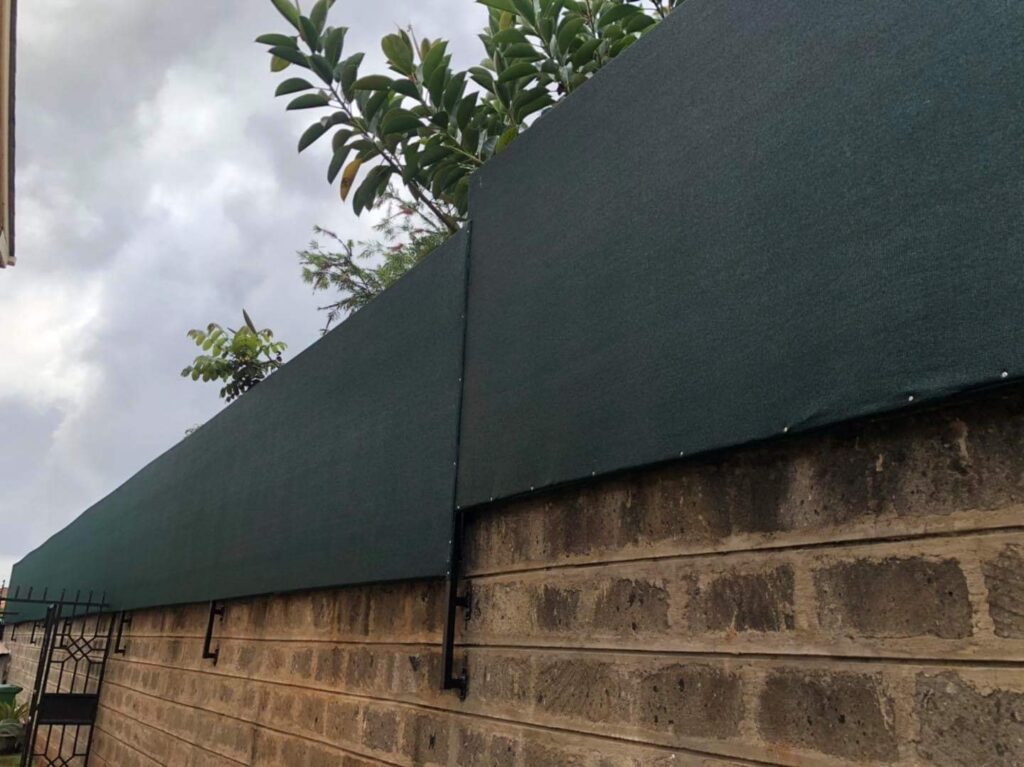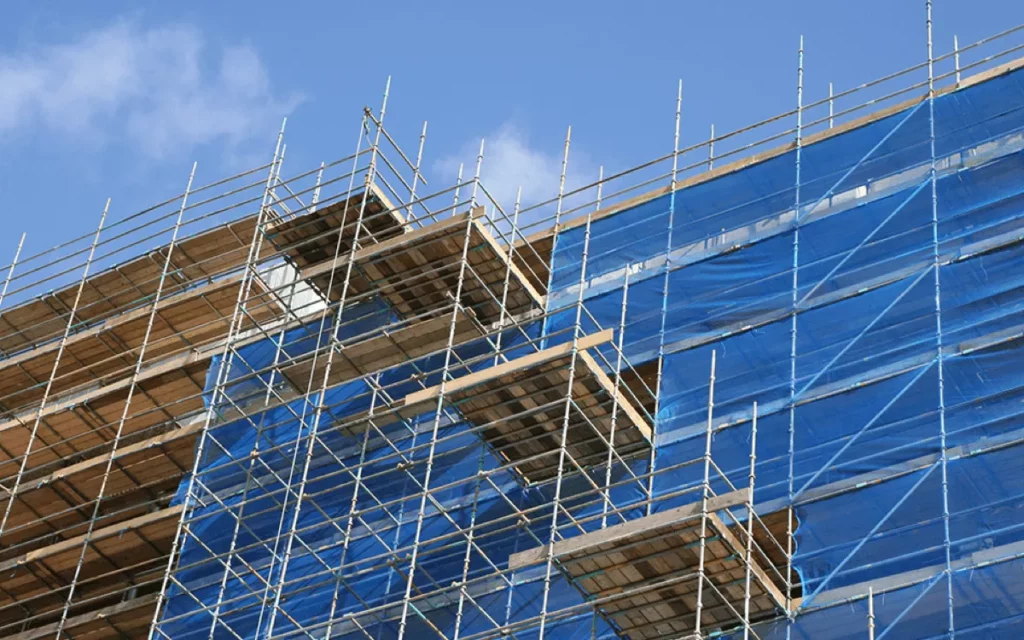What Is Scaffold Shade Cloth and How Is It Used on Construction Sites?
Scaffold shade cloth is a protective barrier used on construction sites, made primarily from High-Density Polyethylene (HDPE) fabric. This durable material creates an essential shield between construction activities and the surrounding environment.
Types of Scaffold Shade Cloth
The shade cloth comes in three main blockout percentages:
- 50% blockout: Ideal for basic sun protection while maintaining airflow
- 70% blockout: Provides enhanced protection from UV rays and weather elements
- 90% blockout: Offers maximum protection for sensitive materials and high-risk areas
The installation of scaffold shade cloth typically pays for itself through prevented delays and maintained productivity. Construction sites using proper shade protection report up to 30% fewer weather-related work stoppages compared to unprotected sites. This protective measure proves particularly valuable during summer months when heat and UV exposure can significantly impact project timelines and worker efficiency.

Installation Process
Installation involves securing the shade cloth directly to scaffolding frameworks using heavy-duty cable ties or specialised fixing clips. The fabric stretches across vertical and horizontal surfaces, creating a continuous protective barrier around the construction zone.
Key Applications
Key applications include:
- Wrapping multi-storey building scaffolds
- Creating temporary weather barriers
- Protecting ground-level work areas
- Shielding material storage zones
Benefits of HDPE Fabric
The strength of HDPE fabric allows it to withstand harsh construction environments while remaining lightweight for easy handling. Its UV-resistant properties ensure that the material maintains its integrity throughout extended outdoor exposure.
You’ll find shade cloth particularly valuable in urban construction projects where containment of dust and debris is crucial. The versatility of this material also makes it adaptable to various scaffolding configurations, providing consistent protection across different project phases.
Learn more on: Cutting, Bending, and Placing Reo Bars: Best Practices
How Does Scaffold Shade Cloth Enhance Worker Safety?
Scaffold shade cloth serves as a critical safety barrier against multiple workplace hazards on construction sites. The strategic placement of shade cloth creates protective zones that shield workers from dangerous environmental conditions.
Heat Stress Prevention
- Reduces ambient temperature by up to 15°C in direct sunlight areas
- Blocks 70-90% of solar radiation in high-risk work zones
- Creates cooler microclimates for extended work periods
UV Protection Benefits
- Blocks harmful UVA and UVB rays linked to skin cancer
- Reduces direct sun exposure during peak UV hours
- Provides SPF 50+ equivalent protection for exposed workers
Respiratory Safety Improvements
- Contains airborne construction dust within work zones
- Prevents cross-contamination between different site areas
- Reduces inhalation risks from concrete cutting and drilling
The shade cloth’s protective qualities extend beyond basic sun protection. Its dense weave creates effective dust barriers that capture harmful particles, protecting workers’ respiratory systems. The material’s UV-resistant properties maintain these protective qualities throughout extended outdoor exposure. Find more about protection on https://plato.stanford.edu/entries/privacy-medicine/
Construction teams working behind shade cloth report reduced instances of heat exhaustion and sunburn. The controlled environment allows for longer work periods without compromising worker safety. Sites using appropriate shade cloth coverage see fewer heat-related incidents and improved compliance with workplace safety regulations.

How Does Scaffold Shade Cloth Improve Worker Comfort?
Scaffold shade cloth creates optimal working conditions through strategic temperature regulation and light control. The shade material blocks up to 90% of direct sunlight, establishing cooler work zones with temperature reductions of 5-10°C compared to unprotected areas.
1. Enhanced Visibility and Focus
- Reduced glare allows workers to maintain visual clarity during precision tasks
- Natural light filtration prevents eye strain from harsh reflections
- Improved depth perception for safer equipment operation
2. Customisable Comfort Levels
Different shade densities offer tailored solutions for varying conditions:
- 50% shade cloth: Maximum airflow with moderate sun protection
- 70% shade cloth: Balanced ventilation and temperature control
- 90% shade cloth: Maximum heat reduction for extreme weather
3. Ventilation Benefits
The mesh structure of shade cloth maintains essential air circulation while providing protection:
- Prevents stagnant air pockets in work areas
- Allows heat dissipation from equipment and machinery
- Creates comfortable microclimates within scaffolded zones
The breathable nature of shade cloth materials supports natural cooling through air movement, while its UV-resistant properties maintain effectiveness throughout extended project durations. Workers experience reduced physical strain and fatigue, enabling sustained productivity during peak daylight hours.
How Does Scaffold Shade Cloth Protect Building Materials During Construction?
Scaffold shade cloth serves as a critical defence system for valuable building materials on construction sites. The protective barrier shields materials from direct exposure to harsh weather conditions that can compromise their structural integrity. Click here to find more about harsh.
Rain Protection
- Creates a waterproof barrier preventing moisture damage to timber products
- Stops water pooling around stored materials
- Reduces rust formation on metal components
- Maintains the quality of packaged materials like cement and plaster
Wind Resistance
- Blocks wind-driven debris from damaging stored materials
- Prevents lightweight materials from being displaced
- Reduces dust accumulation on sensitive equipment
- Stabilises material storage areas
The strategic placement of shade cloth around material storage zones extends the lifespan of construction supplies. Building materials maintain their specified properties when protected from UV rays and temperature fluctuations. This preservation is particularly vital for:
- Timber products susceptible to warping
- Paint and chemical containers
- Electrical components and wiring
- Adhesives and sealants
- Insulation materials
Project timelines benefit from proper material protection. Sites using scaffold shade cloth report fewer instances of material replacement and reduced waste from weather damage. The cost of installing protective shade cloth is minimal compared to the expense of replacing damaged materials or dealing with construction delays.
What Are the Additional Safety Features of Scaffold Shade Cloth?
Scaffold shade cloth incorporates critical safety features beyond basic weather protection. Fire retardant properties stand out as a crucial enhancement, with specialised treatments meeting Australian safety standards for construction sites. These fire-resistant versions help prevent flame spread and reduce fire-related risks during welding or hot works.
Key Safety Elements:
- Fire Retardant Properties: Meets AS 4389 safety standards, has self-extinguishing capabilities, and is resistant to molten metal splatter
- Visual Barrier Functions: Blocks distracting movement from adjacent areas, prevents unauthorised site access, and reduces public exposure to construction activities
The shade cloth’s noise reduction capabilities prove particularly valuable in urban construction environments. Dense-weave options can decrease noise transmission by up to 15 decibels, creating a more manageable acoustic environment for both workers and neighbouring properties.
Urban Site Benefits:
- Dampens construction noise
- Reduces echo within scaffolding structures
- Minimises sound travel between floors
These safety features work together to create a comprehensive protective system. The combination of fire resistance, visual screening, and acoustic benefits enhances site safety protocols while maintaining compliance with local building regulations.
Why Are Durability and Maintenance Important for Scaffold Shade Cloth Performance?
The durability of scaffold shade cloth directly impacts site safety and project timelines. High-quality shade cloth with UV-resistant properties maintains its structural integrity for 3-5 years, preventing degradation that could compromise worker protection.
Key durability features include:
- UV-stabilised polymers that prevent fabric breakdown
- Anti-fungal treatments to resist mould growth in wet conditions
- Reinforced edges that resist tearing under tension
Shade cloth maintenance requirements remain minimal when proper installation procedures are followed. The fabric’s anti-bacterial properties prevent biological growth, reducing the need for frequent cleaning or replacement. This resistance proves particularly valuable in Australia’s humid coastal regions where mould can develop rapidly.
Installation practices affect long-term performance:
- Secure attachment points every 500mm
- Proper tensioning to prevent sagging
- Regular inspection of fixing points
- Immediate repair of any tears or damage
The durability of shade cloth translates to cost efficiency through reduced replacement needs. Construction sites using premium-grade materials report up to 60% longer service life compared to standard alternatives.
Proper maintenance extends beyond the physical cloth to include:
- Quarterly inspections of all fixing points
- Tension adjustments after severe weather events
- Documentation of any repairs or replacements
- Cleaning with low-pressure water when required
These maintenance practices ensure continuous protection throughout the project lifecycle while maximising the investment in safety equipment.
How Does Scaffold Shade Cloth Contribute to Overall Project Efficiency?
Scaffold shade cloth delivers significant project efficiency gains through multiple direct benefits to construction operations:
1. Reduced Weather-Related Disruptions
- Protection from rain allows work to continue in light precipitation
- Wind protection prevents material displacement and unsafe conditions
- UV protection enables continuous work during peak sun hours
- Decreased equipment damage from exposure to elements
2. Enhanced Worker Performance
- Cooler working environments lead to sustained productivity levels
- Reduced fatigue from heat exposure means fewer mandatory breaks
- Better visibility through glare reduction increases work accuracy
- Protected workspace allows focus on tasks without weather distractions
3. Cost-Effective Safety Solution
- Lower insurance premiums through improved site safety measures
- Reduced sick leave from heat stress or UV exposure
- Minimal material waste from weather damage
- Decreased project delays from weather-related stoppages

